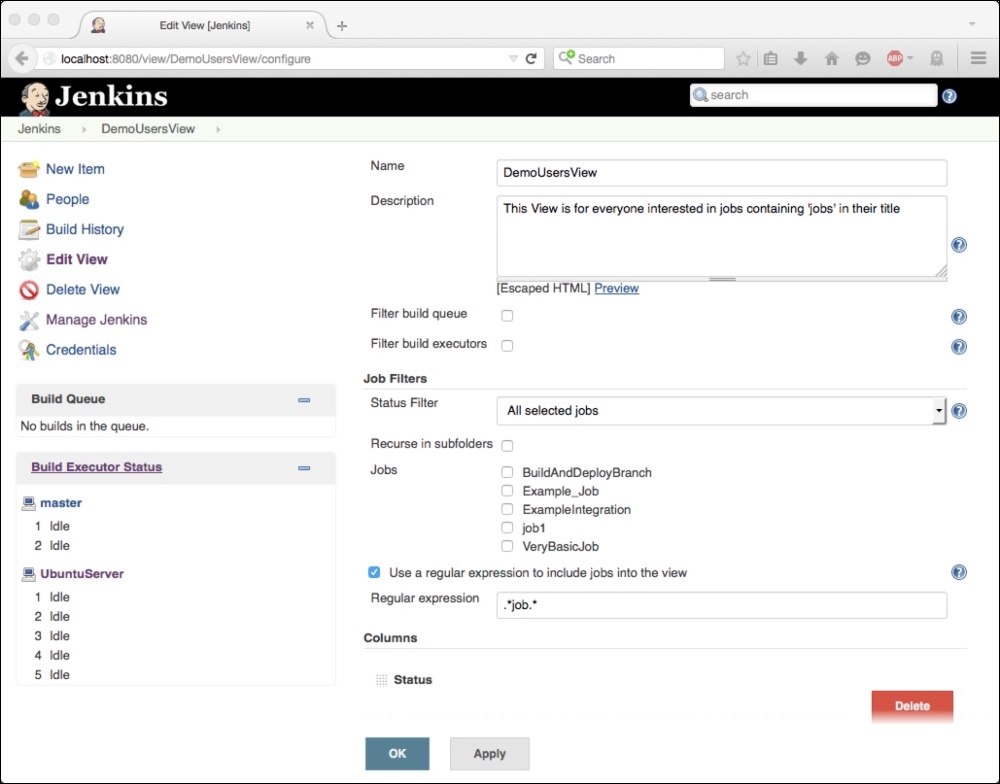Sometimes Jenkins is set up and then left running in the background doing its thing; it's rarely checked upon or looked at unless things go wrong, and users are happy that things get done.
On other occasions, the Jenkins UI is used heavily by many people at the same time, all of whom will inevitably have their own requirements and priorities, and then the look and feel of Jenkins becomes a high priority.
There are many ways in which you can give the users what they want, including setting up numerous views, each providing a different user or group with a view of the (Jenkins) world that suits them.

Using the simple .*job.* regular expression ensures that all jobs (both present and future) that contain the string "job" in their title will be displayed on this view. Again, this really relies on a decent naming convention being followed, but if this is done, it can reduce the maintenance requirements of this aspect to nothing—when a new matching job is created,...



